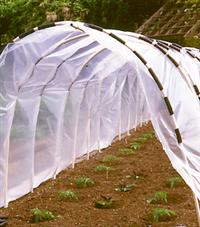Study Plant Health Management Online
- Start any time, study from home at your own pace

- Expert tutors with decades of industry experience
Develop a broad understanding of practices and processes involved in successful plant cropping. It will develop a clear understanding of environmental control and plant growth within a protective environment, to get
her with a practical knowledge of plant husbandry techniques.
Course Aim Develop a clear understanding of environmental control and plant growth within a protective environment, together with a practical knowledge of plant husbandry techniques.
COURSE STRUCTURE
There are seven lessons in this module as follows:
- Structures for Protected Cropping -Describe and Evaluate the type and shape of modern growing structures.
- Environmental Control
- Cladding Materials and their Properties
- Irrigation and Nutrition
- Relationship between Production techniques and Horticultural practices
- Harvest and Post Harvest Technology
- Risk Assessment
AIMS
- Describe and Evaluate the type and shape of modern growing structures
- Describe and evaluate environmental controls in protected cropping
- To explain the nature of solar radiation, transmission properties of glass and its substitutes
- Determine the water requirements of a crop; and methods of irrigation.
- Relate horticultural principles to the production and harvesting of a range of crops.
- Evaluate the factors involved in marketing protected crops
- Evaluate the factors involved in marketing protected crops
- Undertake risk assessment
WHAT WILL YOU DO IN THIS COURSE?
 This course involves both practical and theoretical tasks which involve you doing a wide variety of things, including:
This course involves both practical and theoretical tasks which involve you doing a wide variety of things, including:
- Identify the main types of growing structure
- Relate use of structures to shape and type of construction
- Identify the range of environmental factors controlled within a growing structure
- Describe the use of the equipment used to measure and monitor these factors
- Name and describe a range of types of environmental controls
- Evaluate the use of IT facilities for environmental control
- Describe the meaning of “daylight” and explain the role of sunlight and diffused light
- Relate time of year to the quantity and quality of available light
- Evaluate how the shape and orientation of a structure will affect light transmission
- Assess the effectiveness of glass and cladding alternatives for light transmission
- Describe the durability and insulation properties of glass and alternative materials
- Select and describe appropriate systems of irrigation for plants grown in situ
- Select and describe appropriate systems of irrigation for container grown plants
- Specify and evaluate systems for incorporating plant nutrients into the irrigation water
- Explain the effects of environmental control on a range of plants
- Relate the essential features necessary for successful plant establishment and development to their underlying scientific principles.
- Describe the production of a range of crops
- State the optimum stage of growth for harvesting a range of crops
- Describe the harvesting systems for protected crops
- Explain how shelf life can be affected by pre and post harvesting treatment of the crop
- State the factors to be considered when marketing crops
- Evaluate alternative marketing outlets
- Relate packaging & presentation to marketing
- Assess benefits to the grower and customer, of grading a crop before marketing
- Determine elements of risk in the practical operations associated with protected plant production.
- Identify safe working practices